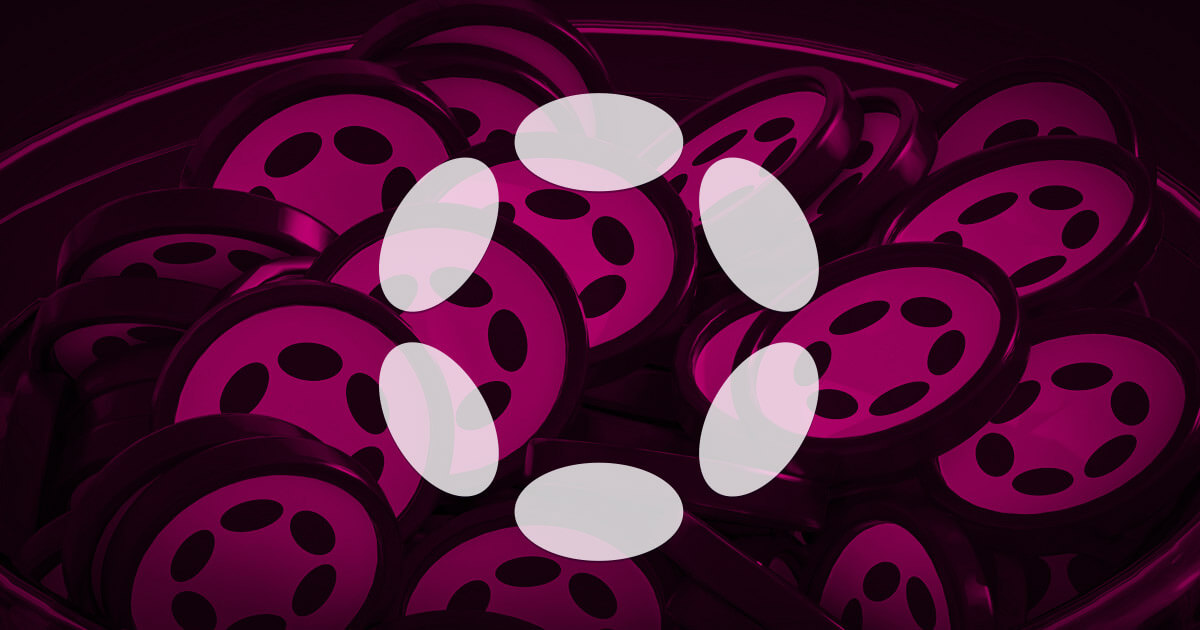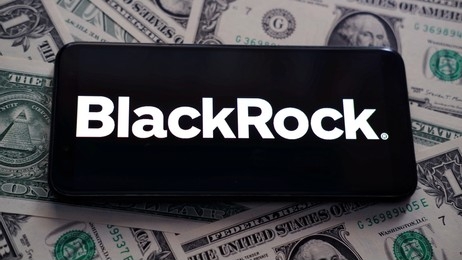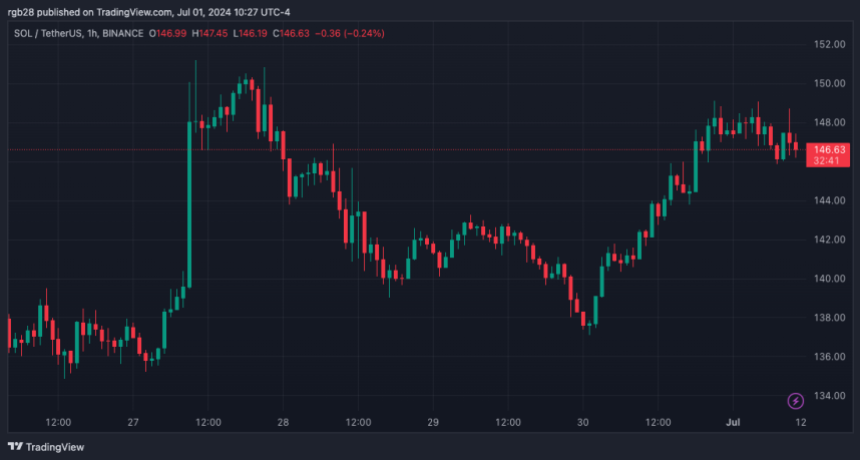Latest News
France, Hong Kong regulators sign MOU to explore wholesale CBDCs, tokenization | MATIC News

The Banque de France (BDF) and the Hong Kong Monetary Authority (HKMA) announced a collaboration focusing on wholesale central bank digital currencies (CBDCs) and the tokenization of financial assets.
According to the press release, the partnership marks a significant milestone in promoting financial innovation and enhancing interoperability in digital currencies.
The HKMA’s participation in the European Central Bank’s (ECB) Eurosystem exploratory work represents a major step forward, making it one of the first central banking institutions outside the Eurosystem to join the initiative.
Interoperability
Through the Memorandum of Understanding (MoU), the BDF and HKMA aim to advance the study of wholesale CBDCs and tokenization. The MoU strengthens communication and collaboration, laying the groundwork for advancements in new technologies.
Both the BDF and the HKMA have established themselves as pioneers in the field of CBDCs. The collaboration will focus on the interoperability between the BDF’s DL3S infrastructure and the HKMA’s Project Ensemble Sandbox.
The HKMA’s Project Ensemble, announced earlier this year, aims to explore innovative financial market infrastructure for interbank settlement of tokenized money through wholesale CBDCs.
The experiment seeks to optimize settlement efficiency in international transactions and enhance interoperability between financial market infrastructures in different jurisdictions.
Surging interest
The interest in CBDCs has surged globally, with 94% of central banks exploring the potential for digital currencies amid calls urging adoption to stay competitive with private digital currencies.
The Bank for International Settlements (BIS) and the International Monetary Fund (IMF) have become vocal advocates for CBDCs, emphasizing their role in modernizing the financial system and improving the efficiency of cross-border transactions.
The BIS has also expressed support for tokenization initiatives, which involve converting physical assets into digital tokens on a blockchain. The process aims to enhance the efficiency, transparency, and security of financial transactions. The BIS’s tokenization projects, such as Project Promissa and Project Aurum, focus on digitizing financial instruments and exploring privacy aspects of CBDCs.
Most central banks are currently focusing on wholesale CBDCs, which cater to large transactions between financial institutions, rather than retail CBDCs aimed at the general public. The likelihood of central banks issuing wholesale CBDCs within the next six years is higher than that of retail CBDCs, which some regulators believe carry the risk of destabilizing the financial system.
Latest News
Bahamas to provide CBDC access via commercial banks | MATIC News

The Bahamas will provide access to its central bank digital currency (CDBC) the “Sand Dollar” through commercial banks to increase adoption, Reuters reported on July 1, citing the country’s central bank governor.
Governor of the Central Bank of The Bahamas John Rolle said the country intends to establish the regulations within two years and has started signaling its intent to banks.
Rolle said:
“We foresee a process where all of the commercial banks will eventually be in that space and they will be required to provide their clients with access to the [CBDC].”
The Central Bank of the Bahamas reportedly sees the change as critical to raising CBDC and mobile payment adoption rates, even though banks will need to significantly modify their existing IT systems to comply with the upcoming obligations.
Rolle said uptake of the Sand Dollar is still limited years after its launch in 2020, requiring a shift from incentives to enforcement.
Adoption in question
Reuters described low adoption statistics amid the news. It reported that the CBDC accounts for under 1% of the country’s currency in circulation.
Reuters said wallet top-ups fell to $12 million in the eight months before August 2023 from $49.8 million in the same period in 2022, based on central bank data.
Rolle previously described “wide use, but very low average transaction value” in an interview with The New Times on June 19. He said 120,000 mobile wallets exist, equal to 20% of retail bank accounts, but mobile wallets make up less than 1% of retail payments.
Strong short-term data
A central bank press release from February described stronger short-term data. It recognized “modest seasonal growth in digital payments activities,” including the Sand Dollar, even though lower government transfer payments impacted overall year-to-date trends.
The bank said that the person-to-business (P2B) and business-to-business (B2B) transactions reached a combined $4.5 million, mainly involving the Sand Dollars, doubling from November 2022. It said personal wallet counts rose 20% year-to-date in December 2023. Sand Dollars in circulation rose 60.8% to $1.7 million.
Bahamas’ mandatory adoption policies could precede other strategies elsewhere. Reuters noted that the European Central Bank similarly intends to require retail and banks to accept and offer any future digital euro if it proceeds with one.
Latest News
Polkadot treasury holds $245M but faces revenue decline and two-year runway | MATIC News

The Polkadot Treasury holds assets equivalent to 38 million DOT, worth approximately $245 million. Head Ambassador Tommi Enenkel, popularly known as Alice and Bob, shared a new report providing the latest update on the network’s treasury.
This balance equates to about two years of the runway at its current spending rate. The report stated:
“At the current rate of spending, the Treasury has about two years of runway left, although the volatile nature of crypto-denominated treasuries makes it hard to predict with confidence.”
Polkadot’s first six months of spending
During the first six months of this year, Polkadot invested heavily in its ecosystem, spending 11 million DOT, valued at around $87 million, across various projects.
According to the report, the network invested about $37 million in Outreach activities such as advertisements, sponsorships, and events. The network signed sponsorship deals with race car driver Conor Daly and also pushed several marketing activities designed to bolster the network’s adoption by the broader global community.
Polkadot also spent $23 million developing its network features and upgrades, including SDK, Data Services and Indexing, Governance, and Subwallets.
Moreover, the network invested $15 million in liquidity incentives and $5.5 million in Talent and Education. Additionally, it spent $3.8 million to maintain the network and core ecosystem components, and another $2.1 million went towards Research.
Revenue decline
The report highlighted a decline in Polkadot’s revenue. During the first six months of the year, the network’s total earnings dropped to 171,696 DOT from 414,291 DOT, recorded in the second half of 2023.
Enenkel attributed this decline to the significant drop in network fees, which fell from 313,443 DOT last year to 39,444 DOT in the 2024 first half:
“We see that direct revenue from fees is still marginal. Polkadot made 300k DOT from fees in 2023-H2 from a short-lived inscriptions campaign. Fees under regular conditions are pretty stable with about 20k DOT per quarter. Other sources of revenue are typically transfers from accounts that return funds that they received and pay them back for various reasons.”
Disclaimer: CryptoSlate has received a grant from the Polkadot Foundation to produce content about the Polkadot ecosystem. While the Foundation supports our coverage, we maintain full editorial independence and control over the content we publish.
Latest News
Vitalik Buterin suggests ways to speed up Ethereum transaction confirmations | MATIC News

Ethereum co-founder Vitalik Buterin has suggested ways to help the blockchain improve its transaction confirmation times.
Buterin, in a June 30 blog post, explained that Ethereum’s Gasper consensus mechanism uses a slot-and-epoch architecture that contains certain complexities, like bug interactions and a 12.8-minute confirmation time, that makes it “more and more uncomfortable” for user experiences.
So, he highlighted some of the “practical options” Ethereum has to improve its user experience further.
SSF
Buterin stated that the single-slot finality (SSF) mechanism is similar to the Tendermint consensus, as it allows the finalization of blocks as soon as they are produced.
However, unlike the Tendermint consensus, Ethereum will keep the “inactivity leak” mechanism to allow chains to remain functional even if a third of the validators go offline. Buterin added that the single-slot finality mechanism also has its faults. Notably, all Ethereum stakers must publish two messages every 12 seconds, overloading the chain.
Meanwhile, Buterin furthered that while there are ideas to mitigate this issue, users may still have to wait 5-20 seconds. He wrote:
“There are clever ideas for how to mitigate this, including the very recent Orbit SSF proposal. But even still, while this improves UX significantly by making ‘finality’ come faster, it doesn’t change the fact that users need to wait 5-20 seconds.”
Rollup preconfirmations
Rollup preconfirmations aim to improve Ethereum’s Layer 2 (L2) solutions. These solutions process transactions with the same security as the Ethereum base layer (L1) but on a larger scale.
Rollups confirm transactions much faster than the current 5-20 seconds, targeting latencies of hundreds of milliseconds. This method divides responsibilities — the L1 network remains stable, censorship-resistant, and reliable, while the L2s offer faster transaction times and address user needs directly.
To achieve faster confirmations, L2s create decentralized sequencing networks. These networks have smaller groups of validators who quickly sign off on blocks, often within milliseconds, and commit them to the blockchain.
However, validators must ensure their commitments are consistent and trustworthy. If a validator signs conflicting blocks, they risk losing their deposits.
Based preconfirmations
Based preconfirmations leverage Ethereum proposers’ advanced capabilities, driven by Maximum Extractable Value (MEV) prospects.
The concept involves establishing a standardized protocol where users can pay an extra fee for immediate assurance that their transaction will be included in the upcoming block. This service, known as preconfirmations-as-a-service, would assure users of swift transaction confirmation.
Proposers who fail to fulfill their commitment or breach the agreement face penalties (slashing). Buterin noted that this framework will apply to L1 transactions and extend to L2 solutions. By treating all L2 blocks as L1 transactions, the preconfirmation mechanism ensures accelerated confirmations throughout the Ethereum network.
Buterin noted that Ethereum implementing SSF and rollup or based preconfirmations could significantly reduce transaction confirmation times.
However, he pointed out that this would return to the initial “epoch-and-slot architecture” the blockchain was trying to ditch. He stated:
“There is a deep philosophical reason why epoch-and-slot architectures seem to be so hard to avoid: it inherently takes less time to come to approximate agreement on something, than to come to maximally-hardened ‘economic finality’ agreement on it.”
He suggested that the network developers explore other options that are not as tightly interwoven as Gasper.
Mentioned in this article
-

 Hot Projects4 months ago
Hot Projects4 months agoBitcoin Blasts Past $70,000 to Register New All-Time High | MATIC News
-

 Latest News4 months ago
Latest News4 months agoCourt upholds SEC’s unregistered securities claims against Gemini, Genesis’ Earn program | MATIC News
-

 Latest News2 months ago
Latest News2 months agoSix Coinbase customers claim the exchange is violating securities laws in new lawsuit | MATIC News
-
Hot Projects2 months ago
Bitcoin Will Be Set For New ATHs If It Breaks This Resistance: Analyst | MATIC News
-

 Hot Projects3 months ago
Hot Projects3 months agoBitcoin ETF Inflows Could Eclipse $1 Trillion, Predicts Bitwise CIO | MATIC News
-

 Hot Projects3 months ago
Hot Projects3 months agoOndo Finance Joins BlackRock Tokenized Fund As Inflows Surpass $160M | MATIC News
-

 Latest News4 months ago
Latest News4 months agoOver $1 billion wiped off HEX’s valuation following Richard Heart’s disparaging remarks | MATIC News
-

 Latest News4 months ago
Latest News4 months agoCathie Wood sees Bitcoin at $1 million sooner than 2030 after record ETF performance | MATIC News




